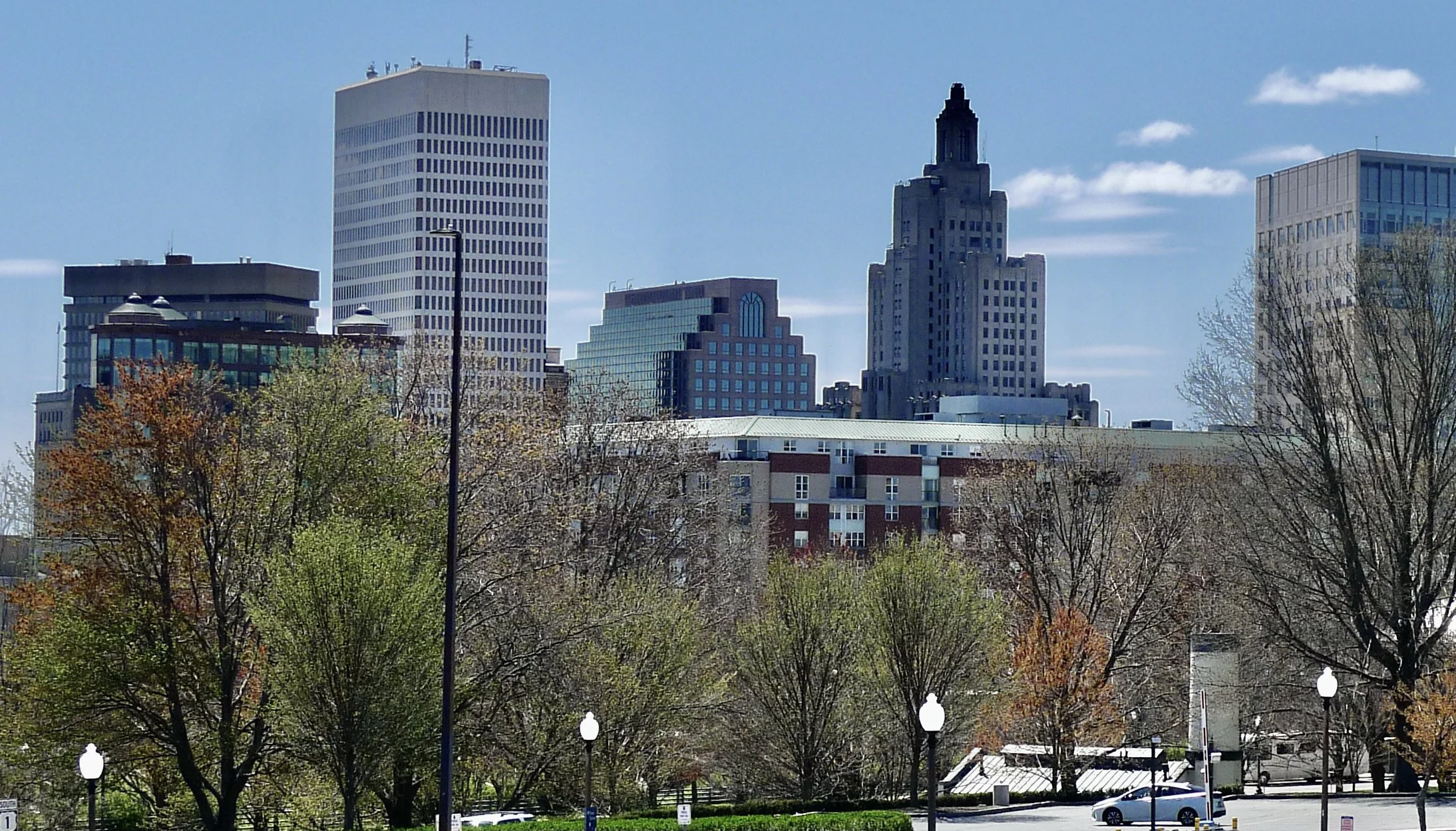William Morgan: Save downtown Providence's centerpiece
The Industrial Trust Co. building is the fulcrum of the Providence skyline.
— Photo by David I. Jacobson
Saving and rehabbing the Industrial Trust Co. Building is crucial to revitalizing downtown Providence. To imagine the city without the nicknamed “Superman Building,’’ is like contemplating Paris without the Eiffel Tower or London without Big Ben, New York without the Empire State Building or Washington without the Capitol.
Most of the recent discussion of saving the skyscraper, designed by the New York firm of Walker & Gillette and built in 1928, has been about the cost of restoration and who should bear that hefty multimillion-dollar expense. While no small matter, the real issue about preserving and rehabbing Providence’s most prominent urban symbol cannot hinge just on the money. Losing this landmark would be a disaster, one that would cost the city and state immeasurably more than bonded indebtedness or taxpayer pain. It would mean a loss of prestige, optimism, self-confidence and our well-earned reputation as a Renaissance City.
Aerial view of downtown Providence shows keystone position of Industrial Trust Building.
— Photo by Luis Carranza
The limestone-sheathed Art Deco masterpiece at 55 Kennedy Plaza is simply a landmark that we must not lose. More than any other element of the skyline, with the exception of the State House, the Industrial Trust Building is the identifiable icon of the city.
Not just the tallest, but the most attractive element of the downtown skyline.
— Photo by William Morgan
There are significant architectural and historical considerations that favor preservation, not to mention the benefits of an infusion of new downtown inhabitants. Yet, the key role that the Superman Building plays is as a majestic visual fulcrum – a clearly recognized feature, a compass marker, an urban punctuation point much like the Eiffel Tower.
Eye appeal: lantern detail of the top of the building, designed, among other things, to be a port for dirigibles.
— Photo by William Morgan
Unlike a lot of its newer neighbors, the Industrial Trust Building is an artfully decorated architectural masterpiece, and not a boringly repetitious wall of undifferentiated glass. Not just vertical real estate, its mass diminishes as it reaches for the sky–the work of architects who understood beauty, good proportions, scale and civic aspiration.
Compare the Superman Building with the 1973 addition to the Hospital Trust Tower, an uninspiring lump of travertine; in half a century the quality of downtown commercial architecture declined visibly.
— Photo by William Morgan
It is irresponsible to declare that the Industrial Trust Building will be razed if the current financing package cannot be agreed upon: this is a structure for which a use and renovation plan must be found. There is no alternative. As Robert Whitcomb argued recently in GoLocal, tearing down this noble identifier and symbol of the city’s once great commercial prowess would send a terrible message to the world. If we cannot afford to restore this treasure, how likely would we be able to fill in the void left by its destruction? Or as one of my urban-planning mentors, Congressman Charles Farnsley, a sponsor of the 1966 Historic Preservation Act, used to say of such urban mauling: This is like a beautiful woman losing a front tooth in a country with no dentists.
Charles Farnsley, mayor of Louisville, Ky., before working with Lyndon Johnson on preservation, had another phrase that is even more haunting: Americans are the only people who bomb their own cities. In a town known as a preservation success story, that’s not a mantle we should want to wear. Rather, we need to be the city that opened the rivers, removed an interstate highway slicing through its heart, and created a vibrant arts scene. If we can do that, we can figure a way to breathe new life into the Industrial Trust Building.
Providence skyline without the Industrial Trust Building.
— Photo by William Morgan
William Morgan is the architecture critic of GoLocalProv.com, as well as a long-time contributor to New England Diary. He’s the author of many books on architecture.





